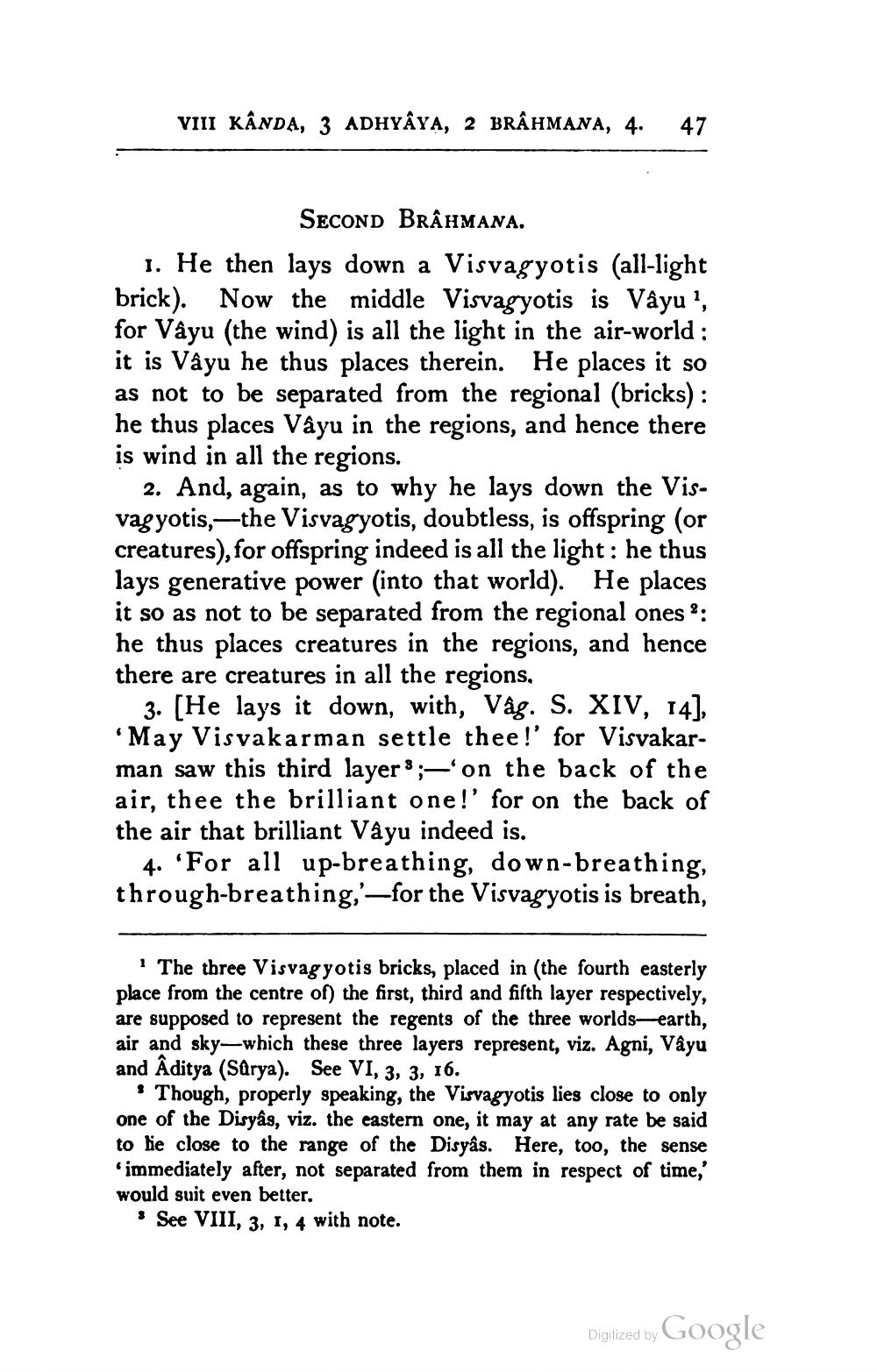________________
VIII KÂNDA, 3 ADHYAYA, 2 BRÂHMANA, 4.
47
SECOND BRAHMANA. 1. He then lays down a Visvagyotis (all-light brick). Now the middle Visvagyotis is Vâyu ?, for Vayu (the wind) is all the light in the air-world: it is Vâyu he thus places therein. He places it so as not to be separated from the regional (bricks) : he thus places Vâyu in the regions, and hence there is wind in all the regions.
2. And, again, as to why he lays down the Visvagyotis,—the Visvagyotis, doubtless, is offspring (or creatures), for offspring indeed is all the light: he thus lays generative power (into that world). He places it so as not to be separated from the regional ones :: he thus places creatures in the regions, and hence there are creatures in all the regions,
3. [He lays it down, with, Våg. S. XIV, 14), May Visvakarman settle thee!' for Visvakarman saw this third layer 3 ;—'on the back of the air, thee the brilliant one!' for on the back of the air that brilliant Vayu indeed is.
4. 'For all up-breathing, down-breathing, through-breathing,'—for the Visvagyotis is breath,
The three Visvag yotis bricks, placed in (the fourth easterly place from the centre of) the first, third and fifth layer respectively, are supposed to represent the regents of the three worlds earth, air and sky—which these three layers represent, viz. Agni, Vayu and Aditya (Sarya). See VI, 3, 3, 16.
* Though, properly speaking, the Visvagyotis lies close to only one of the Disyâs, viz. the eastern one, it may at any rate be said to lie close to the range of the Disyâs. Here, too, the sense
immediately after, not separated from them in respect of time, would suit even better.
* See VIII, 3, 1, 4 with note.
Digitized by Google




